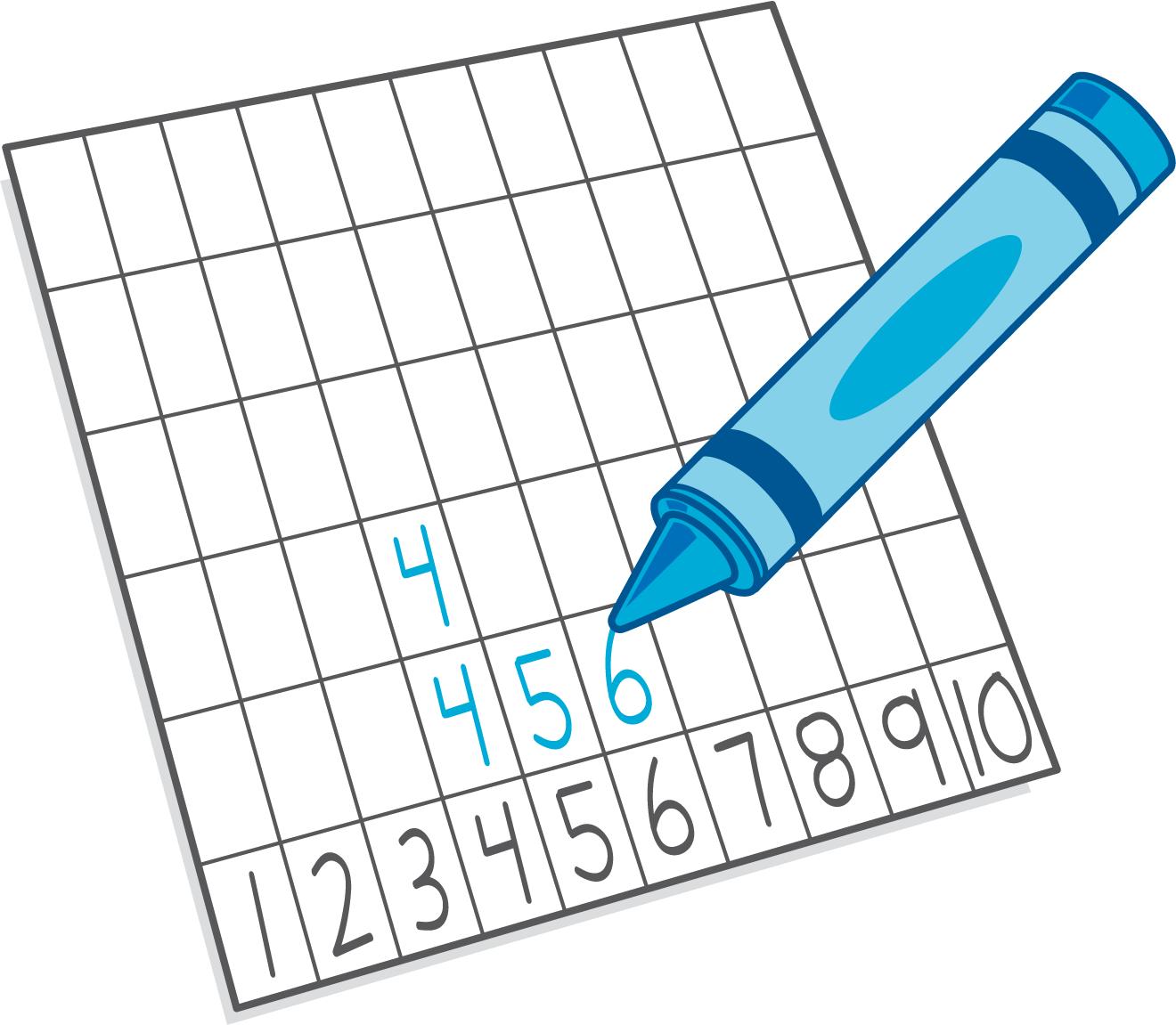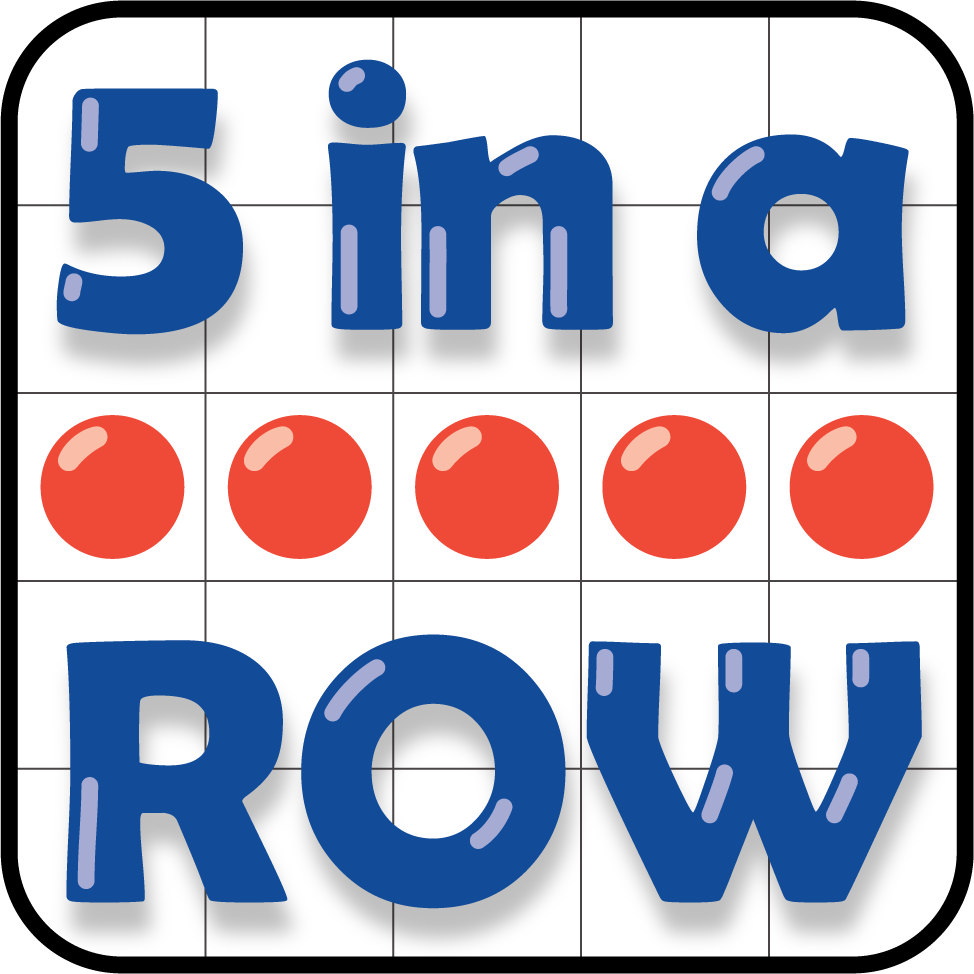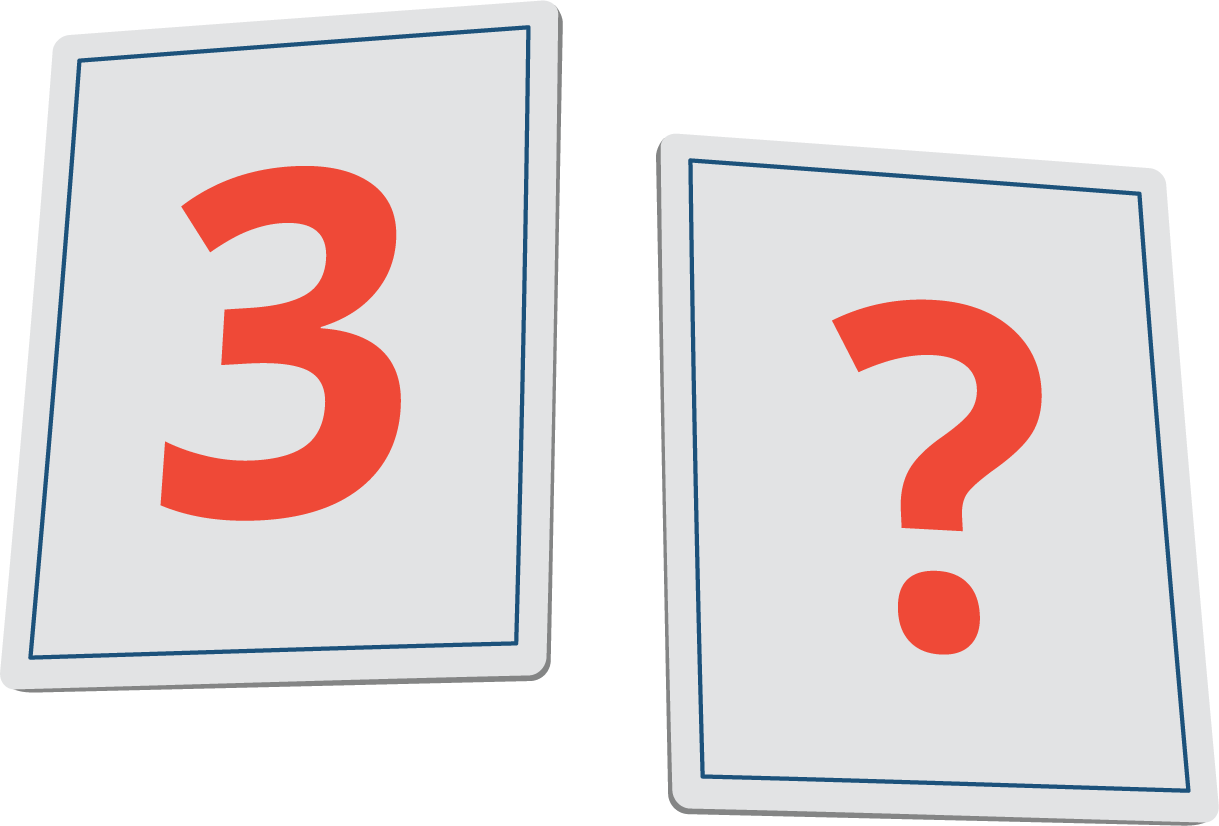Lesson 6
Center Day 1
Warm-up: Which One Doesn’t Belong: Math Tools (10 minutes)
Narrative
Launch
- Groups of 2
- Display the image.
- “Pick one that doesn’t belong. Be ready to share why it doesn’t belong.”
- 1 minute: quiet think time
Activity
- “Discuss your thinking with your partner.”
- 2–3 minutes: partner discussion
- Share and record responses.
Student Facing
Which one doesn’t belong?




Student Response
For access, consult one of our IM Certified Partners.
Activity Synthesis
- “Let’s find at least one reason why each one doesn’t belong.”
Activity 1: Revisit Find the Pair, Make 10 (20 minutes)
Narrative
The purpose of this activity is for students to revisit a center introduced in kindergarten. In Find the Pair, Make 10, students find a number that would make 10 when added to the number on one of their cards. Students may use addition or subtraction to find the number. Students then fill in an equation to show the pair of numbers that make 10.
Advances: Speaking, Listening
Supports accessibility for: Organization, Conceptual Processing, Language
Required Materials
Materials to Gather
Materials to Copy
- Find the Pair Stage 2 Recording Sheet
Required Preparation
- Each group of 2 needs a set of Number Cards 0-10.
Launch
- Groups of 2
- Give each group a set of cards, recording sheets, and access to 10-frames and two-color counters.
- “We are going to play a game that you learned in kindergarten, called Find the Pair. We are going to find pairs that make 10. Let’s make sure everyone remembers how to play the game.”
- “Each person gets five cards to start.”
- Display five cards.
- “When it is your turn, you ask your partner for a number that makes 10 when added to a number on one of your cards. For example, I have a card with a (6), so I would ask my partner for a (4) because (6) and (4) make 10.”
- “If your partner has the number you asked for, they give you the card. Then you put those two cards down and fill in the equation showing the numbers that make 10.”
- Demonstrate completing the equation.
- “If your partner doesn’t have the number you asked for, pick up one card from the pile.”
- “Continue playing until one player runs out of cards. The player with the most pairs wins.”
Activity
- 10 minutes: partner work time
- Monitor for students who use a 10-frame and counters or their fingers to find the number needed to make 10.
Student Response
For access, consult one of our IM Certified Partners.
Advancing Student Thinking
- “How did you figure out what number to ask your partner for?”
- “How could you use your fingers to help you figure out what number you need to make 10?”
Activity Synthesis
- Display the card with a 3.
- “This is my last card. How can I figure out what number to ask my partner for?”
- Invite previously identified students to share.
Activity 2: Centers: Choice Time (20 minutes)
Narrative
- Counting Collections
- Number Race
- Check it Off
- Five in a Row: Addition and Subtraction
- Find the Pair
Required Materials
Materials to Gather
Required Preparation
- Gather materials from previous centers:
- Counting Collections, Stage 1
- Number Race, Stage 3
- Check it Off, Stages 1 and 2
- Five in a Row: Addition and Subtraction, Stages 1 and 2
- Find the Pair, Stage 2
Launch
- Groups of 2
- “Now you are going to choose from centers we have already learned.”
- Display the center choices in the student book.
- “Think about what you want to do first.”
- 30 seconds: quiet think time
Activity
- Invite students to work at the center of their choice.
- 8 minutes: center work time
- “Choose what you would like to do next.”
- 8 minutes: center work time
Student Facing
Choose a center.
Counting Collections

Number Race

Check it Off

Five in a Row: Addition and Subtraction

Find the Pair

Activity Synthesis
- “We have been playing a lot of games to help us build fluency with addition and subtraction within 10. How can you continue working on addition and subtraction at home?” (I could use flash cards. I could play these games with my family.)
Lesson Synthesis
Lesson Synthesis
Display Mathematical Community poster.
Ask students to reflect on both individual and group actions while considering the question: “What norms, or expectations, were we mindful of as we did math together in our mathematical community?”